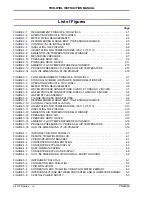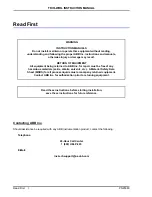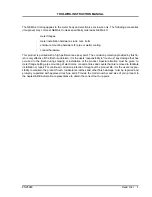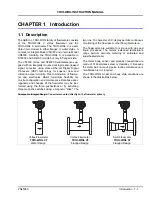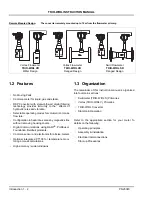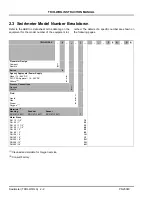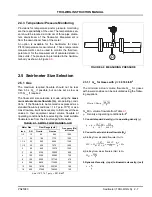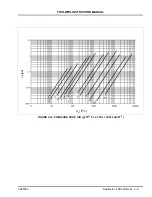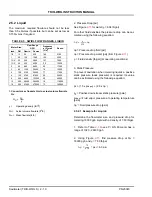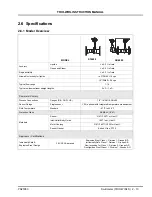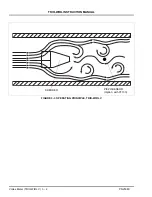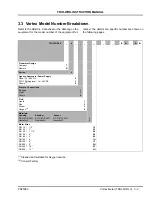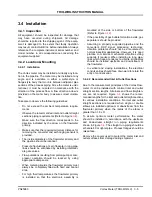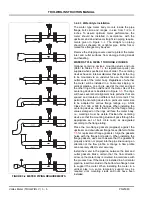
Swirlmeter (TRIO-WIRL S) 2 - 8
PN25080
TRIO-WIRL INSTRUCTION MANUAL
ρ
= Density at operating conditions [lb/ft
3
]
ρ
S
= Density at standard conditions [lb/ft
3
]
p
= Pressure at operating conditions [psig]
T = Temperature at operating conditions [°F]
Q
V
= Actual volume flowrate [acfh]
Q
s
= standard flowrate [scfh]
Q
m
= Mass flowrate [lb/h]
2.5.1.2 Example for Gases:
Determine the flowmeter size for metering 35,000 scf/h
(Q
s
) carbon dioxide; temp. = 100 °F, press. = 70 psig.
ρ
s
= 0.123 lb/ft
3
(CO
2
, see Table
1. Convert
ρ
s
to
ρ
:
2. Convert from Q
s
(ft
3
/h) to Q
v
(ft
3
/h) :
Refer to Table
to see that a 1-1/2” / DN 40 meter
has the following flow range: 430 to 7070 acfh
3. Using Figure
, find the pressure drop at
Q
v
= 6425 ft
3
/h and
ρ
= 0.67 lb/ft
3
:
2.5.1.3 Pressure Drop, Gas & Steam (psi)
Refer to Figure
for air ( @70
o
F, 14.7 psi,
ρ
=0.075
lb/ft
3
). For other fluid densities the pressure drop can
be calculated using the following equation:
∆
p’= Fluid pressure drop [psi]
∆
p = Air pressure drop (from Figure
) [psi]
ρ
= Fluid density [lb/ft
3
] (at operating conditions)
ρ
0.123
14.7 70
+
14.7
----------------------
530
460 100
+
------------------------
×
0.67
=
=
Q
v
35060
0.123
0.67
-------------
×
6425
acfh
=
=
p
'
∆
0.67
··
0.0749
---------------- 0.85
×
7.6
psi
=
=
TABLE 2-2. STANDARD DENSITIES FOR
SELECTED GASES
Gas
Standard Density [lb/ft
3
]
Acetylene
0.0732
Air 0.0749
Ammonia
0.0481
Argon
0.1111
Butane
0.1686
Carbon Dioxide
0.1230
Carbon Monoxide
0.0780
Ethane
0.0843
Ethylene
0.0787
Hydrogen
0.0056
Methane
0.0448
Natural Gas
0.045
Neon
0.0556
Nitrogen
0.0780
Oxygen
0.0893
Propane
0.1261
Propylene
0.1196
∆
p
'
ρ
0.075
-------------
∆
p
×
=
lb/ft
3


